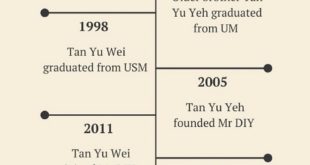Following the Covid-19 outbreak, Singapore and other countries such as Japan, China, South Korea and India have developed their own versions of the contact tracing app, aimed at mitigating the spread of Covid-19.
Fundamentally, contact tracing works by tracking down the individuals an infected person has been in contact with and then taking action to break the chain of transmission, until we have a vaccine.
However, our very own TraceTogether app developed by GovTech launched in March has faced technical challenges and only 25 per cent of the population has downloaded the app.
In a bid to get more people to participate in contact tracing, the Singapore government announced last Friday (June 5) that it is currently developing a wearable contact tracing device and it will be rolled out within the month.
This move has invited a public outcry, with Singaporeans labelling it as the government’s alleged attempts to implement a surveillance tool on its citizens.
That said, is contact tracing a feasible way to keep the virus at bay? We took a look at how Singapore has implemented contact tracing so far and its challenges.
Traditional Contact Tracing Is Too Laborious
When Singapore confirmed its first case of coronavirus infection in January, a group of contact tracers was deployed.
They worked in two shifts from 8.30am to 10pm, seven days a week, as they call people to check if they are “close contacts” of Covid-19 patients.
The contact tracer’s job is to do up an activity map — everything the patient has done and the people he/she has been in contact with over the past two weeks.
The mapping has to be detailed, accounting for all 24 hours, minute by minute, with no gaps in between.

If there are gaps, the contact tracer will call the patient to try to jog his memory. And if the patient is too sick, he will approach his next-of-kin instead.
This means that it largely depends on the infected person’s memory. To be honest, a huge proportion of us would struggle to recall the activities we did or places we visited within the last week alone.
Sometimes, patients may have taken a taxi — they no longer keep the receipt, and only remember vague details like a “blue cab.” The contact tracers would then have to sift through the CCTV footage at the taxi stand to identify the said taxi.
They also have to act fast and verify what the patient said within 24 hours. They also have to cross-reference other patients’ activity maps to see if the locations match or if there are any overlaps.
Moreover, if the virus is spreading far too quickly, traditional contact tracing methods may not be able to keep up due to its laborious process in tracing contacts.
Not Everyone Owns A Smartphone
In March, the government had introduced a contact tracing app called TraceTogether, that was developed by GovTech.
It exchanges encrypted and anonymised Bluetooth signals with nearby phones running the same app for up to 25 days. This allows users to be informed if they are in prolonged physical proximity — within 2 metres for at least 30 minutes — with an infected person.
For contact tracing via the app to work, the individual must first own a smartphone. A proportion of the Singapore population doesn’t own one, especially the elderly and young children.
Users must then agree to download it, and then key in their infection status should they test positive. This procedure of consent is the biggest hurdle to people’s participation.

In addition, users must activate Bluetooth and constantly leave it on for the app to work.
Though GovTech assured users that they do not collect data on GPS location, WiFi or mobile network, there were still concerns over data hacking and potential abuse of power by the government — coupled with complaints of quickly draining batteries.
As a result, only about 1.5 million people in Singapore — or 25 per cent of the population — have downloaded the app.
The ideal proportion of users needed to ensure that the app works effectively is about 75 per cent of the population.
Moreover, there were technical issues with the app. It did not work well on Apple devices as the iOS operating system would suspend Bluetooth scanning when the app was running in the background.
In other words, the app needs to be open on the screen of an Apple iPhone to be able to register a contact with another app user in close proximity.
Ross Anderson of the University of Cambridge also pointed out that Bluetooth signals pass through walls, so people behind screens and in different rooms could be unnecessarily flagged as having had contact. Therefore, this could potentially result in a flood of false positives.
Concerns Over Apple And Google’s Technology
To help developers design more effective contact tracing apps, tech giants Apple and Google also rolled out new software last month.
Called the exposure notification application programming interface (API), the software enables better privacy protection by encrypting all data exchanged via Bluetooth.
The Smart Nation and Digital Government Group (SNDGG) that drives the digital transformation of Singapore, has not announced any plans to use the API.

In fact, many countries have expressed doubt as Apple and Google will be the ones owning the software, and governments would have to use the technology on the companies’ terms.
Singapore might share the same concerns too until it reaches a consensus with the tech companies, should it decide to use it.
This could also be the reason why countries have been developing their own contact tracing apps, so that they can have complete ownership and control over the data collected.
SafeEntry Is Not Inclusive Enough
Apart from TraceTogether, the Singapore government uses a digital check-in tool called SafeEntry, to facilitate its contact tracing efforts.
The system collects visitors’ personal data, either through QR codes or barcode scans, when they enter a venue such as supermarkets and workplaces.
The data can then be used to facilitate contact tracing should an individual who visited a location test positive for Covid-19.

Data collected through SafeEntry is retained for 25 days, similar to TraceTogether’s data retention policy, which the government says is the necessary retention period to support the Health Ministry’s contact tracing efforts.
SafeEntry is mandatory at certain locations and has been deployed at more than 16,000 sites nationwide to date — but this is only a fraction of public places in Singapore.
Moreover, at some locations, the checks are not stringent enough and it is easy for control to fall through the cracks, especially when they are faced with an onslaught of traffic.
Besides that, they have to rely on the onus of the user to check-in and check-out from locations diligently.
S’poreans Are Unwilling To Wear A Tracking Device
In a bid to get more Singaporeans to participate in contact tracing due to the low participation rate of the TraceTogether app, the government has proposed the use of a wearable contact tracing device as it would not depend on someone owning a smartphone.
The development of the wearable is in the works and once ready, it could be distributed to Singaporeans this month.
“If this portable device works, we may then distribute it to everyone in Singapore,” said Dr Vivian Balakrishnan, Minister-in-Charge of the Smart Nation Initiative and Minister for Foreign Affairs during a parliament session last Friday (June 5).
“I believe this will be more inclusive and it will ensure that all of us will be protected,” he added.

This news has attracted flak from citizens as they voiced concerns over the potential deployment as being intrusive and a breach of their privacy.
An online petition has been set up to urge the public to reject the use of wearable devices, and has garnered more than 32,000 signatures as of writing.
Headlined “Singapore says ‘No’ to wearable devices for COVID-19 contact tracing”, the online petition describes the implementation of such devices as “blatant infringements upon our rights to privacy, personal space, and freedom of movement”.
“All that is stopping the Singapore government from becoming a surveillance state is the advent and mandating the compulsory usage of such a wearable device. What comes next would be laws that state these devices must not be turned off [or] remain on a person at all times — thus, sealing our fate as a police state,” wrote Wilson Low, who started the petition on June 5.
In response to the concerns, Dr Balakrishnan said that the wearable would not track the user’s GPS location and uses only Bluetooth signals to detect users’ proximity.
Apart from being intrusive, it would also be cumbersome to recharge the wearable device on a daily basis.
It also begs the question: what if the battery life were to run out while we are out and have no means to recharge it?
Digital Contact Tracing Not A Silver Bullet
Digital contact tracing is evidently faster than traditional tracing, requires fewer resources and doesn’t rely on human memory.
However, the biggest hurdle is getting people to willingly participate in the technology over concerns regarding privacy breaches and infringement of rights.
Moreover, the government has to get at least 60 per cent of the population to opt in for digital contact tracing to be effective, according to a model by the University of Oxford. Although this figure is lower than Dr Balakrishnan’s 75 per cent figure, 60 per cent is still a stretch.
To reach such a high level of participation, Singaporeans will need to trust that their data will be protected.
Unless the Singapore government make it mandatory, the effectiveness of digital contact tracing cannot be attained.
“While a lot of people are arguing that we are using mobile phones, Ez-Link card and the likes that already track us, these entities that use our data do not have legal jurisdiction over us,” said Facebook user Wilson Wong in a post.
Besides that, from a practical standpoint, the apps and wearable devices, which require Bluetooth, have to avoid draining users’ battery life.
We also have to keep in mind that however effective the apps or wearable turn out to be, they cannot be a silver bullet for existing social distancing measures, and must be part of a much broader effort of testing and contact tracing.
A growing sense of complacency induced by the flattened infection curve in recent weeks suggests people are less likely to be motivated to use it than they would have been a few months ago, when the nation was in the grip of the virus.
Featured Image Credit: AFP Photo / AP



